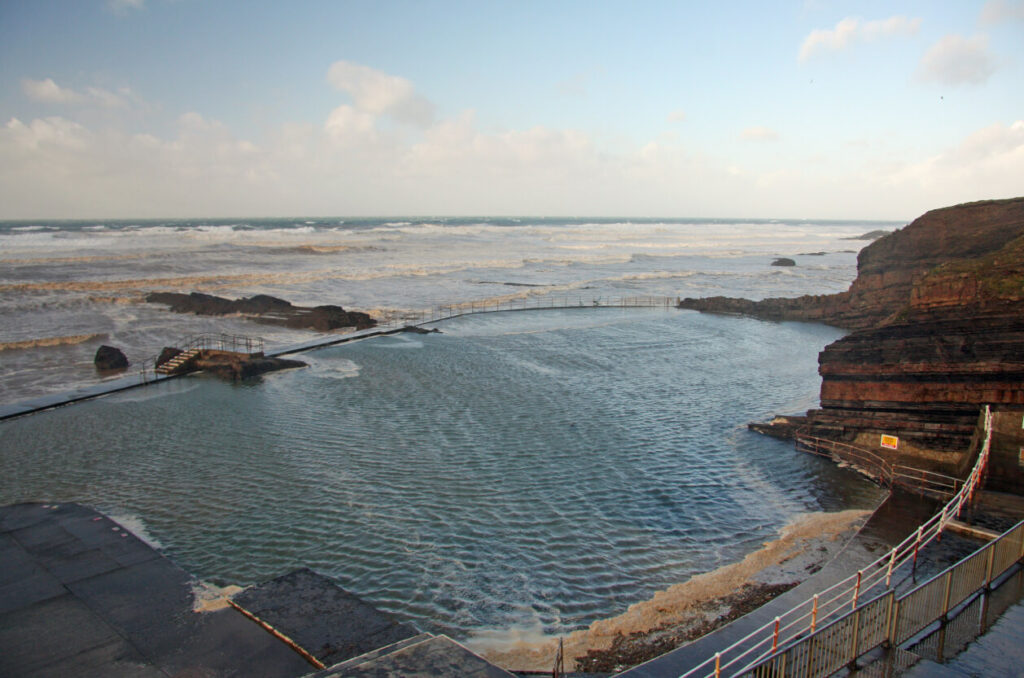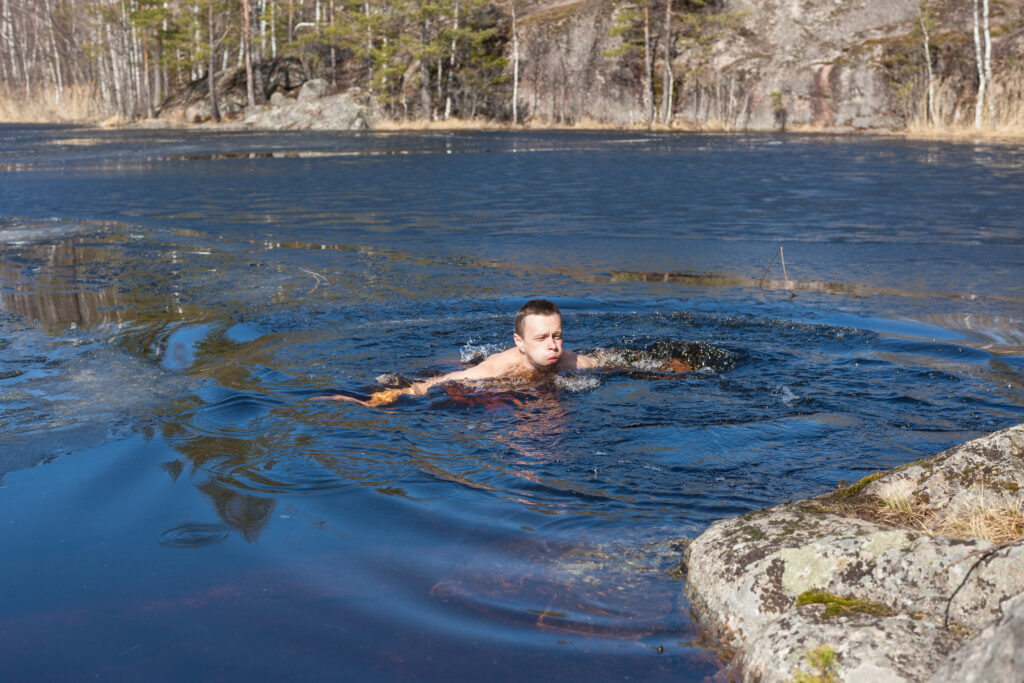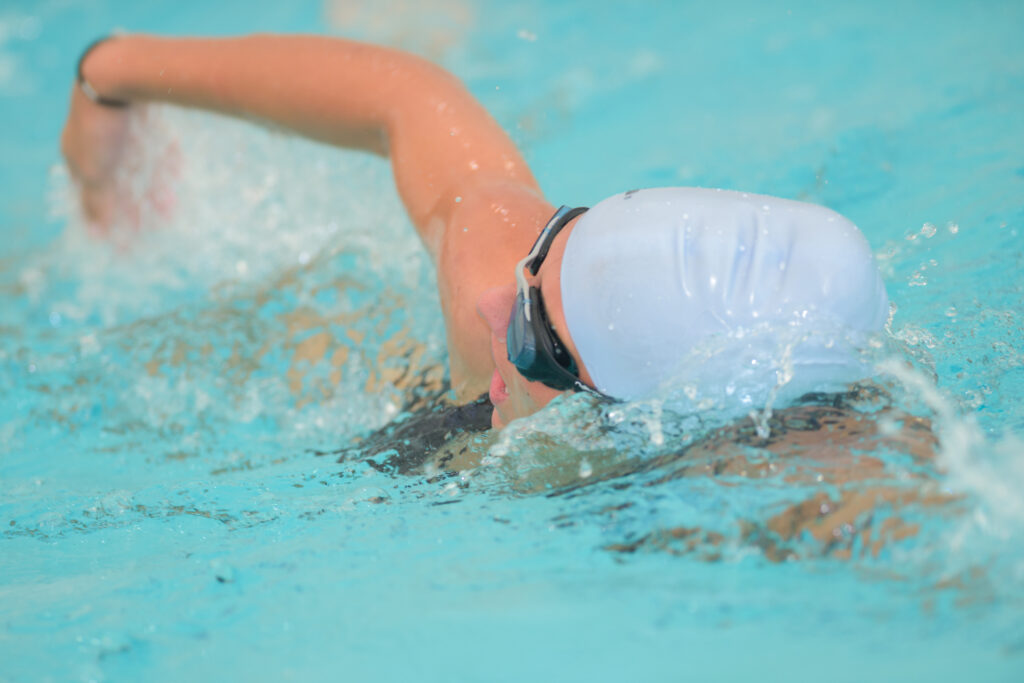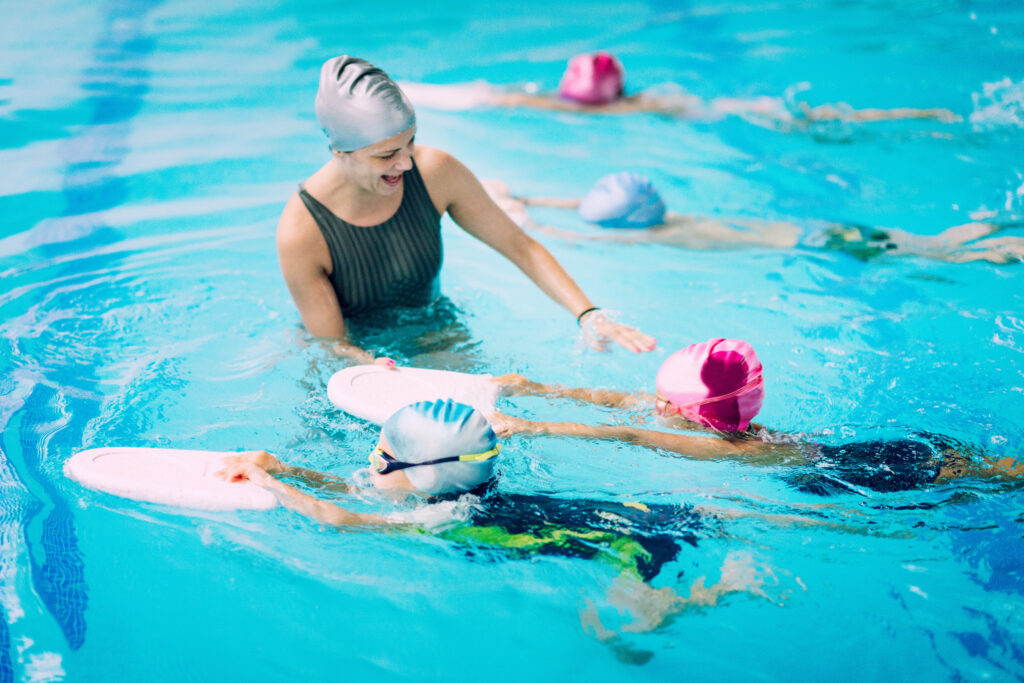The English Channel, a daunting stretch of water separating England and France, has long captivated the imagination of swimmers worldwide. Many have attempted to conquer its treacherous currents and chilly waters, but only one person can claim the title of being the first to swim across unaided. Captain Matthew Webb, an English seaman and accomplished swimmer, made history on 24 August 1875 by becoming the first person to successfully swim the English Channel without artificial aids.
Webb’s remarkable feat was the culmination of extensive training and preparation. He spent months swimming off the coast of Dover to acclimate to the cold water and build his endurance. On the day of his historic swim, Webb dove into the Channel from Admiralty Pier in Dover, coated in porpoise grease to help insulate his body from the frigid temperatures.
After 21 hours and 45 minutes of gruelling swimming, Webb emerged victorious near Calais, forever etching his name in the annals of swimming history. His incredible achievement not only demonstrated the limits of human endurance but also paved the way for future generations of Channel swimmers who would follow in his wake.
Key Takeaways
- Captain Matthew Webb successfully swam the English Channel unaided in 1875, taking nearly 22 hours to complete the crossing
- Webb’s achievement sparked public interest in long-distance swimming and inspired future generations of Channel swimmers
- The English Channel remains a coveted challenge for swimmers, with strict rules governing official crossings to honour Webb’s legacy
Matthew Webb: The First Channel Swimmer
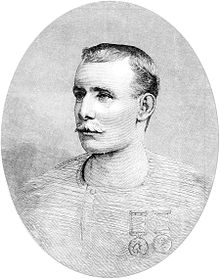
Matthew Webb made history as the first person to successfully swim across the English Channel unaided. His remarkable feat in 1875 captured the public’s imagination and established him as a pioneer in long-distance swimming.
Early Life and Background
Matthew Webb was born on 19 January 1848 in Dawley, Shropshire. He grew up near the River Severn, where he developed his swimming skills as a young lad. Webb came from a large family, being one of twelve children.
At the tender age of 12, Webb joined the Merchant Navy, embarking on a seafaring career that would shape his future. His time at sea honed his swimming abilities and fostered a deep connection with water.
Swimming Career and Notable Achievements
Webb’s swimming prowess gained recognition during his time in the Merchant Navy. He earned acclaim for his heroic attempt to save a man who had fallen overboard from a ship in the Atlantic Ocean.
In 1873, Webb left the Merchant Navy to pursue a career as a professional swimmer. He showcased his endurance by swimming 20 miles in the Thames from Blackwall to Gravesend, cementing his reputation as a formidable long-distance swimmer.
Preparation for the Channel Swim
Webb’s preparation for the Channel swim was meticulous and gruelling. He trained extensively in the cold waters of the English Channel, gradually increasing his time in the water to build stamina and acclimatise to the harsh conditions.
To protect himself from the frigid waters, Webb coated his body with porpoise oil. This innovative technique helped him retain body heat during the long hours of swimming.
Webb’s first attempt to cross the Channel on 12 August 1875 was unsuccessful due to strong winds and rough seas. Undeterred, he made a second attempt just 12 days later, setting out from Dover on 24 August 1875.
The Historic 1875 Swim
On 24 August 1875, Captain Matthew Webb embarked on his groundbreaking swim across the English Channel. This monumental feat would cement Webb’s place in history as the first person to successfully swim between England and France without artificial aids.
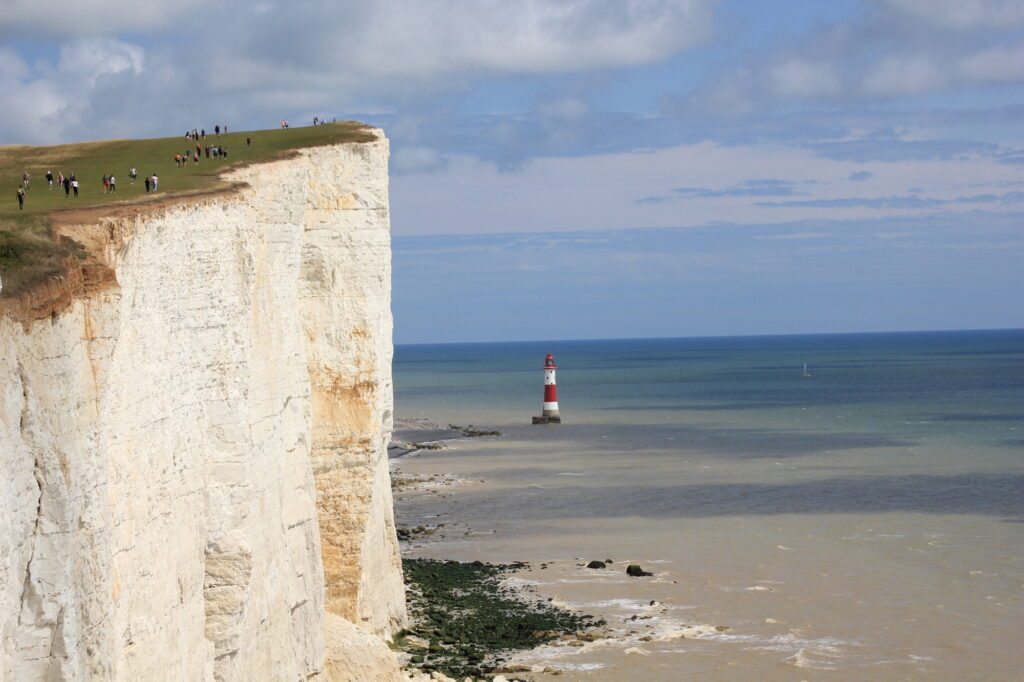
The Route from England to France
Webb began his journey at Dover’s Admiralty Pier, setting off towards the French coast. The planned route traversed the Strait of Dover, a distance of approximately 21 miles as the crow flies. However, due to strong currents and tides, Webb’s actual swimming distance was considerably longer.
The Channel’s unpredictable conditions meant Webb had to navigate carefully. He aimed for Cap Gris-Nez, the closest point on the French coast, but the currents pushed him further east. Webb’s support boat, piloted by experienced local mariners, guided him through the busy shipping lanes.
Challenges of the Swim
Webb faced numerous obstacles during his crossing:
- Strong currents and tides
- Cold water temperatures (around 15-16°C)
- Jellyfish stings
- Fatigue and physical exhaustion
- Mental strain from prolonged exposure
The Channel’s notorious currents often pushed Webb off course, effectively doubling his swimming distance. He relied solely on the breaststroke, a slower but more energy-efficient technique for long-distance swimming.
To combat the cold, Webb coated his body with porpoise oil. This provided some insulation and protection against jellyfish stings. Despite these precautions, he still endured painful encounters with marine life throughout the swim.
Completion and Record
After 21 hours and 45 minutes of continuous swimming, Webb successfully landed near Calais. He had covered an estimated distance of 39 miles due to the challenging currents.
Webb’s feat was immediately recognised as a remarkable achievement:
- First recorded unassisted swim across the English Channel
- Longest open-water swim at the time
- Demonstration of human endurance and determination
His time of 21 hours 45 minutes stood as the Channel swimming record for over three decades. Webb’s success proved that crossing the Channel by swimming was indeed possible, paving the way for future attempts.
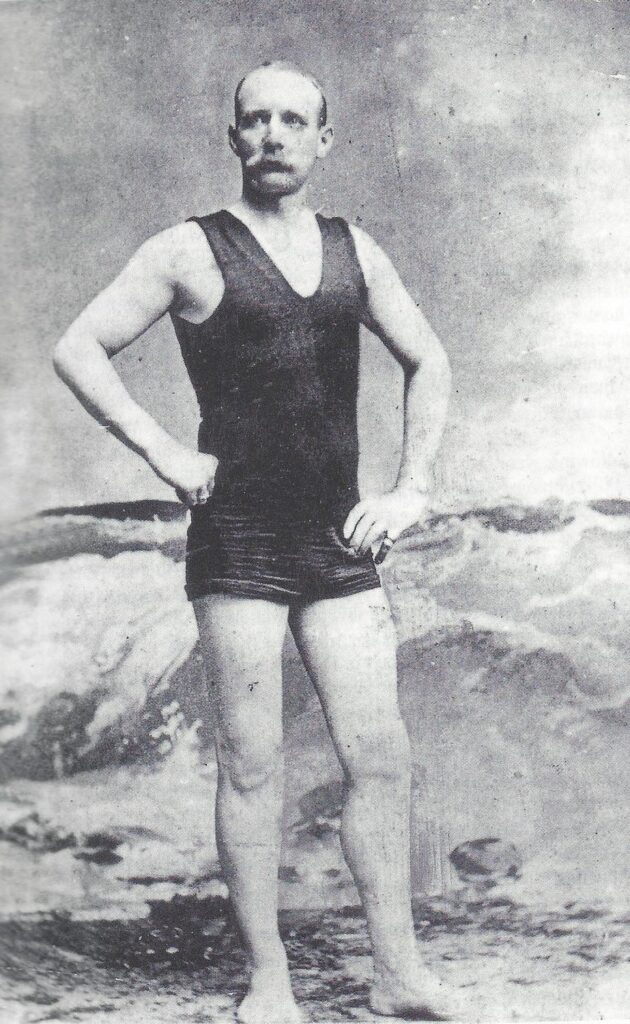
Aftermath and Recognition
Webb’s accomplishment catapulted him to international fame. He was hailed as a national hero in Britain, with his story featured prominently in newspapers like The New York Times.
Accolades and honours followed:
- Awarded the Stanhope Gold Medal for bravery
- Received a £12,000 testimonial fund from admirers
- Invited to give swimming exhibitions across the country
Webb’s swim inspired generations of channel swimmers and endurance athletes. His legacy lives on through the Matthew Webb Memorial in his hometown of Dawley, Shropshire, and the continued popularity of Channel swimming as a supreme test of human endurance.
Impact on Future Channel Swims
Matthew Webb’s pioneering swim across the English Channel in 1875 sparked a wave of interest in long-distance swimming. His achievement inspired countless others to attempt the feat, leading to significant developments in the sport.
Thomas Burgess and His Attempt
Thomas Burgess, a Yorkshire-born professional swimmer, was deeply inspired by Webb’s success. He made his first attempt to cross the Channel in 1904. Despite failing on this occasion, Burgess persevered. He went on to make 15 more attempts over the next seven years.
Burgess’s dedication paid off on 6 September 1911. He successfully swam from Dover to Cap Gris-Nez in 22 hours and 35 minutes. His triumph marked the second-ever successful Channel swim, coming 36 years after Webb’s initial crossing.
Gertrude Ederle’s Historic Swim
Gertrude Ederle, an American competitive swimmer, made history on 6 August 1926. She became the first woman to swim across the English Channel. Ederle’s feat was remarkable not only for breaking gender barriers but also for her impressive time.
She completed the swim in 14 hours and 34 minutes, smashing the previous record by almost two hours. Ederle’s achievement garnered worldwide attention and inspired many more women to take on the challenge of Channel swimming.
Establishment of Organisations
The growing popularity of Channel swimming led to the formation of official bodies to regulate and support these endeavours. The Channel Swimming Association (CSA) was founded in 1927. It aimed to authenticate and observe Cross-Channel swims.
In 2011, the Channel Swimming and Piloting Federation (CS&PF) was established. Both organisations play crucial roles in:
• Verifying swim attempts • Ensuring swimmer safety • Maintaining records • Promoting the sport
These bodies have been instrumental in standardising the rules and regulations for Channel swims, contributing to the sport’s growth and credibility.

Evolution of Channel Swimming
Channel swimming has undergone significant changes since the first successful crossing. Improvements in techniques, training methods, support systems, and equipment have led to faster times and more frequent attempts.
Techniques and Training
Swimmers have refined their approaches to conquer the Channel. The breaststroke, used by Captain Matthew Webb in 1875, has given way to more efficient front crawl techniques. Endurance swimmers now focus on streamlining their strokes and optimising their body position in the water.
Training regimens have become more rigorous and scientific. Swimmers build cold water tolerance through gradual exposure and acclimatisation. They practise in open water conditions to simulate Channel currents and waves.
Nutrition plays a crucial role. Athletes follow carefully planned diets to fuel their bodies for the long swim. Many incorporate specialised feeding strategies during the crossing to maintain energy levels.
Support and Sponsorship
Modern Channel swimmers benefit from extensive support teams. These crews typically include experienced pilots, observers, and feeding specialists. Boats equipped with navigation technology guide swimmers on the most efficient course.
Sponsorship has become more prevalent, allowing swimmers to focus on training full-time. Companies provide financial backing and often supply specialised equipment or nutrition products.
The Channel Swimming Association now oversees and sanctions official crossings, ensuring consistent rules and record-keeping.
Modern-Day Swims and Records
Channel swimming has evolved into a highly competitive sport. Swimmers from around the world attempt to set new records for fastest crossings, most crossings, or unique achievements like swimming both ways.
The use of wetsuits is not permitted in official crossings. Swimmers must contend with the cold waters wearing only a standard swimming costume, cap, and goggles.
Technology has improved safety measures. GPS tracking allows supporters to follow swimmers’ progress in real-time. Advanced weather forecasting helps teams choose optimal crossing dates.
Despite technological advances, the Channel remains a formidable challenge. Swimmers must still overcome strong currents, changing weather conditions, and physical exhaustion to complete the 21-mile journey.
Memorialisation and Legacy
Captain Matthew Webb’s pioneering swim across the English Channel in 1875 left an indelible mark on history. His achievement has been commemorated through various tributes and solidified his place in cultural memory.
Tributes to Captain Webb
A bronze statue of Webb stands proudly in his hometown of Dawley, Shropshire. Unveiled in 1910, the memorial is located on the High Street, serving as a constant reminder of the town’s famous son.
The Webb Memorial in Dover pays homage to the captain’s remarkable feat. Situated near the starting point of his historic swim, it attracts visitors and swimming enthusiasts alike.
In recognition of his groundbreaking achievement, Webb was inducted into the International Swimming Hall of Fame in 1965. This honour solidifies his status as a pioneering figure in the sport.
Inclusion in Cultural Memory
Webb’s legacy extends beyond physical monuments. His name has become synonymous with determination and perseverance in British culture.
The Hotel de Paris in Dover, where Webb stayed before his swim, now bears a blue plaque commemorating his connection to the establishment.
Webb’s image has graced postage stamps and appeared in numerous books and documentaries. His story continues to inspire modern-day channel swimmers and adventurers.
The ship Emerald, which accompanied Webb during his swim, has also become part of the channel-crossing lore, further cementing the captain’s place in maritime history.
Frequently Asked Questions
The English Channel swim has a rich history filled with remarkable achievements and fascinating facts. Numerous swimmers have attempted this challenging feat, setting records and pushing the boundaries of human endurance.
Who achieved the first recorded swim across the English Channel?
Captain Matthew Webb was the first person to successfully swim across the English Channel unaided. He accomplished this incredible feat on 24 August 1875.
Webb coated himself in porpoise grease before diving off Admiralty Pier in Dover to begin his historic swim.
What year was the first successful swim across the English Channel completed?
The first successful swim across the English Channel was completed in 1875. Captain Matthew Webb achieved this milestone on 24 August of that year.
Webb’s swim took approximately 21 hours and 45 minutes to complete.
Which female swimmer first crossed the English Channel, and in what year?
Gertrude Ederle became the first woman to swim across the English Channel on 6 August 1926. She completed the swim in 14 hours and 34 minutes.
Ederle’s achievement was particularly impressive as she beat the existing men’s record by almost two hours.
How many individuals have completed the swim across the English Channel?
As of 2025, over 2,000 individuals have successfully swum across the English Channel. This number continues to grow each year as more swimmers take on the challenge.
The exact count is continuously updated by the Channel Swimming Association.
What is the distance swimmers must cover to cross the English Channel?
The distance swimmers must cover to cross the English Channel is approximately 21 miles (34 kilometres) at its narrowest point. This stretch is between Dover, England, and Cap Gris-Nez, France.
However, due to currents and tides, swimmers often end up covering a greater distance.
Are there any recorded fatalities from attempts to swim the English Channel?
Yes, there have been recorded fatalities from attempts to swim the English Channel. While exact numbers are difficult to confirm, it is estimated that around a dozen swimmers have died during attempts.
The dangers include hypothermia, exhaustion, and challenging weather conditions.

